St Michael’s Isle to Derbyhaven #OscarWalks
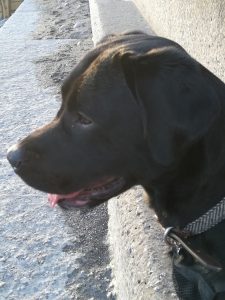 Good weather gave us the chance for a beautiful walk in the south of the island. Oscar was on the lead for most of the way, but was able to have a couple of off-lead runs which he loves. I have to tell you in advance that he was a VERY GOOD BOY today.
Good weather gave us the chance for a beautiful walk in the south of the island. Oscar was on the lead for most of the way, but was able to have a couple of off-lead runs which he loves. I have to tell you in advance that he was a VERY GOOD BOY today.
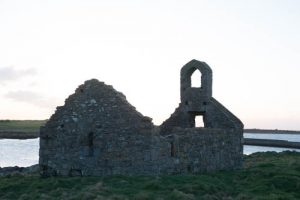
St Michael’s Isle, also known in the past as Fort Island, is about 400 metres long and is just off the Langness Peninsula, joined by a narrow causeway and it features in An Unwilling Alliance, when Hugh Kelly takes Roseen to visit. It’s a beautiful place, covered in springy grass and vegetation, surrounded on all sides by a rocky coastline. I’ve been there in a high wind and it’s a wild place, but today was sunny and calm, although freezing, and there were few people about.
“I’ve been here before, haven’t I, Mum?”
“A few times, Oscar. The last time we came, Anya was with us. And Joey.”
“Don’t cry, Mum. He’s all right, really he is.”
“I know that, Oscar. I just miss him.”
“So do I. Do you remember that day, when he ran off?”
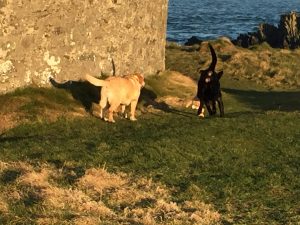
“I really do. We were so concerned about you, we kept you on the long lead, but we let him off. He gave us one look and then started waddling at high speed right towards the rocks and Anya had to run after him.”
“He was after a swim, he loved swimming. Can I swim today?”
“Not here, it’s too rocky. Later you can go in at the beach.”
“What’s that, Mum?”
“That’s St Michael’s Chapel, Oscar. It was built in the twelfth century on the site of an older Celtic keeill.”
“A what?”
“A keeill. It’s a Manx Gaelic word for a chapel. Very old.”
“It looks it. What’s that other building over there. It’s broken too.”
“Ruined, Oscar.”
“Ruined. Broken. Whatever. What is it?”
“It’s called Derby Fort, it was built in the 17th century by James Stanley, the 7th Earl of Derby who was Lord of Mann during the English Civil War, to protect what was then the very busy port of Derbyhaven.”
“Doesn’t look that busy now.”
“Nowadays we have an airport, Oscar. Times change.”
“I suppose so. Can I look inside?”
“Through the gate, it’s not open. Over here.”
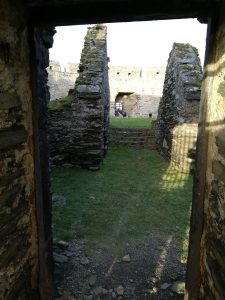
“What’s that?”
“A cannon.”
“A what?”
“A big gun.”
“Oh right. Like the ones at the bottom of Summerhill Glen?”
“That’s right.”
“I like it here. Lots of grass and rocks and sea and smells and…what are those flying things that I like to chase?”
“Birds.”
“That’s right.”
“It’s a bird sanctuary.”
“It must be. I never catch them. But look, Mum – DOOOOOGS!!! Can I go and play?”
“Off you go then.”
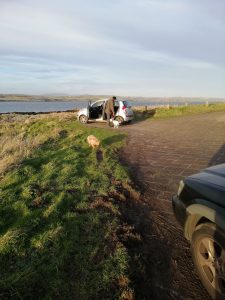 “Whew, that was fun. They’re not youngsters, those two, but they could run. Although that one waddled a bit like old Joey. Where now?”
“Whew, that was fun. They’re not youngsters, those two, but they could run. Although that one waddled a bit like old Joey. Where now?”
“Let’s get your lead back on. We’re going along the coast towards Derbyhaven.”
The walk along the Derbyhaven coast was just over three miles and we were able to do a lot of it on the beach although retreated up to the path or the road where it was too wet or too rocky. Oscar loves the beach, but needs watching as bizarrely, he likes to eat seaweed. This was new to me; neither Toby or Joey would have dreamed of eating anything so nasty and smelly. Recently, Oscar has been learning the valuable command “Leave” and we had the chance to practice this a lot today. It went very well.
“You’re being very good, Oscar.”
“Thanks. What’s that?”
“It’s the back of the airport. When we go away, we sometimes go on airplanes.”
“That’s why I hate airplanes. You should stay here. What’s that big building over there. It’s not broken.”
 “Ruined. No, that’s King William’s College. It’s the only public school on the island. Which really means it’s a private school, because you have to pay to go there. I’ve never really understood that.”
“Ruined. No, that’s King William’s College. It’s the only public school on the island. Which really means it’s a private school, because you have to pay to go there. I’ve never really understood that.”
“I don’t care. Did Jon go there?”
“No.”
“Did Anya?”
“No.”
“Not an interesting place then. What’s that?”
“It used to be a cafe and bar. I’ve never been in, but I think it’s closed down now.”
“Pity. We could have gone for tea. I like this walk.”
“So do I, it’s very pretty. Right, we’re going to turn back and go up to Hango Hill on the way back.”
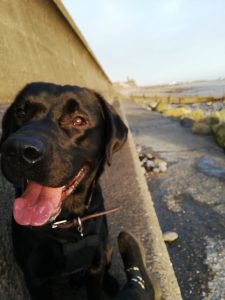 “Can I go on the beach?”
“Can I go on the beach?”
“Yes, but don’t eat the seaweed.”
“Okay.”
“Oscar, leave!”
“Sorry.”
“Oscar, leave!”
“Sorry.”
“Oscar, leave it!”
“Sorry, Mum.”
“What is it with you and seaweed? Neither of your brothers ate seaweed.”
“I just like the smell. And the taste.”
“Try not to, Oscar, it’s really bad for your tummy.”
“I’ll do my best. I’ll go and paddle instead.”
“Good idea. A bit cold to swim.”
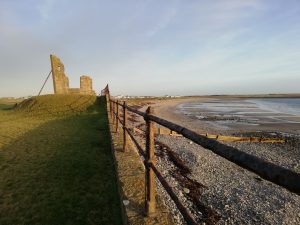 “Ooh. What’s that?”
“Ooh. What’s that?”
“Hango Hill.”
“Eh?”
“It’s called Hango Hill.”
“It’s a very small hill.”
“More of a mound, really, but it’s very old.”
“It’s got another one of those broken buildings on top.”
“You mean ruins?”
“That’s them. You really like ruins, don’t you, Mum? Ruins and books. And dogs, of course.”
“Yes, that pretty much sums me up. Come and see, Oscar.”
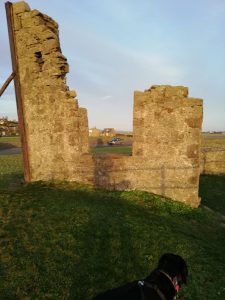 Hango Hill is a small mound by the side of the coast road between Castletown and Derbyhaven, overlooking the beach. It was possibly an ancient burial site and a Bronze Age flat axe was apparently discovered there. The name derives from the Norse words for Gallows Hill and was used as a place of execution until the seventeenth or possibly early eighteenth century.
Hango Hill is a small mound by the side of the coast road between Castletown and Derbyhaven, overlooking the beach. It was possibly an ancient burial site and a Bronze Age flat axe was apparently discovered there. The name derives from the Norse words for Gallows Hill and was used as a place of execution until the seventeenth or possibly early eighteenth century.
The most famous execution to take place on Hango Hill was that of William Christian, also known as Illiam Dhone, (Brown William) for his participation in the 1651 Manx rebellion against the Derby family who were Lords of Mann at the time.

Christian was a Manx politician of his day and is seen variously as a patriot, a rebel or a traitor. He was appointed as Receiver-General by Derby and when the Earl left for England to fight for Charles II he left Christian in charge of the island militia. Derby was taken prisoner at the Battle of Worcester and his wife, a redoubtable lady called Charlotte de la Tremouille, who held Castle Rushen for the King, tried to save her husband’s life by negotiating the surrender of the island to Parliament.
The ensuing rebellion, led by Christian in 1651, was partly due to national politics and partly due to local discontent at some of Derby’s new agrarian policies. The rebels took several local forts and Christian then began negotiations with the Parliamentarians. The Countess was forced to surrender Castle Rushen and Peel Castle, and failed to prevent the execution of her husband. Christian remained Receiver-General and became Governor of the Isle of Man in 1656.
Derby’s family did not forgive or forget. Fraud charges were brought against Christian, who fled to England and was imprisoned for a year in London. On his release he chose to return to Mann, believing that his rebellion against the Earl would be covered by the Act of Indemnity, but the new Earl immediately ordered his arrest. Christian refused to plead at his trial, was found guilty and executed by shooting on Hango Hill on 2 January 1663.
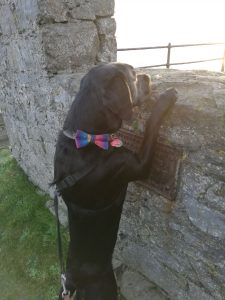
“So what was this place before it was ruined, Mum?”
“I’m not sure, Oscar, but I think it’s the remains of a kind of summerhouse used by the Earl of Derby. It was built after Illiam Dhone’s execution. They used it as a banqueting hall as well, and used to organise horse racing along these dunes towards Langness. I read somewhere that these were the very first “Derby” races. I suppose that’s when they stopped using it for executions.”
“Good thing too. Bet it’s spooky at night.”
“Shall we come down here one evening and see?”
“Not funny, Mum, you know what I’m like in the dark. What does that writing say?”
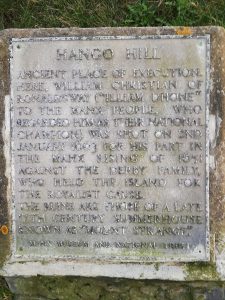 “It’s just a little bit about the history of the place and Illiam Dhone. Each year, on the anniversary of his death, they have a gathering here and make a speech in the Manx language.”
“It’s just a little bit about the history of the place and Illiam Dhone. Each year, on the anniversary of his death, they have a gathering here and make a speech in the Manx language.”
“I’m surprised you don’t come, it’s the sort of thing you’d do.”
“I might one year. It’s always so cold in January, though.”
“It’s blowing up a bit now.”
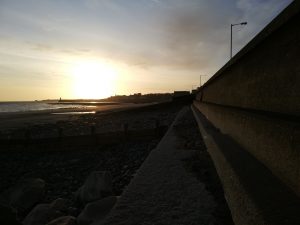 “It is. The light’s starting to fade as well, I forget how early it gets dark. Right, back to the car then, we’ll be warmer if we’re walking.”
“It is. The light’s starting to fade as well, I forget how early it gets dark. Right, back to the car then, we’ll be warmer if we’re walking.”
“Mum. This was a long walk. How far?”
“Probably almost six miles with all the detours and the running around on the beach and the island, Oscar.”
“That’s a long way. I’m going to need a long sleep when I get back. And dinner. I’m starving.”
“Have a biscuit, then. You’ve been such a good boy today, Oscar, I’m proud of you.”
“Thanks, Mum. Won’t be going out next week much, I suppose?”
“No, you’ve got your operation on Friday. But it won’t take long to recover and the weather will be getting better soon. There’s the car. Hop in, baby boy.”
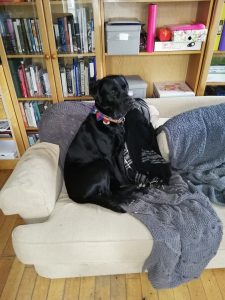
Look out for more #OscarWalks posts to come and if you enjoyed this and want to hear more from Writing with Labradors, or find out about my books, why not follow me on Facebook,Twitter, Instagram or Medium?


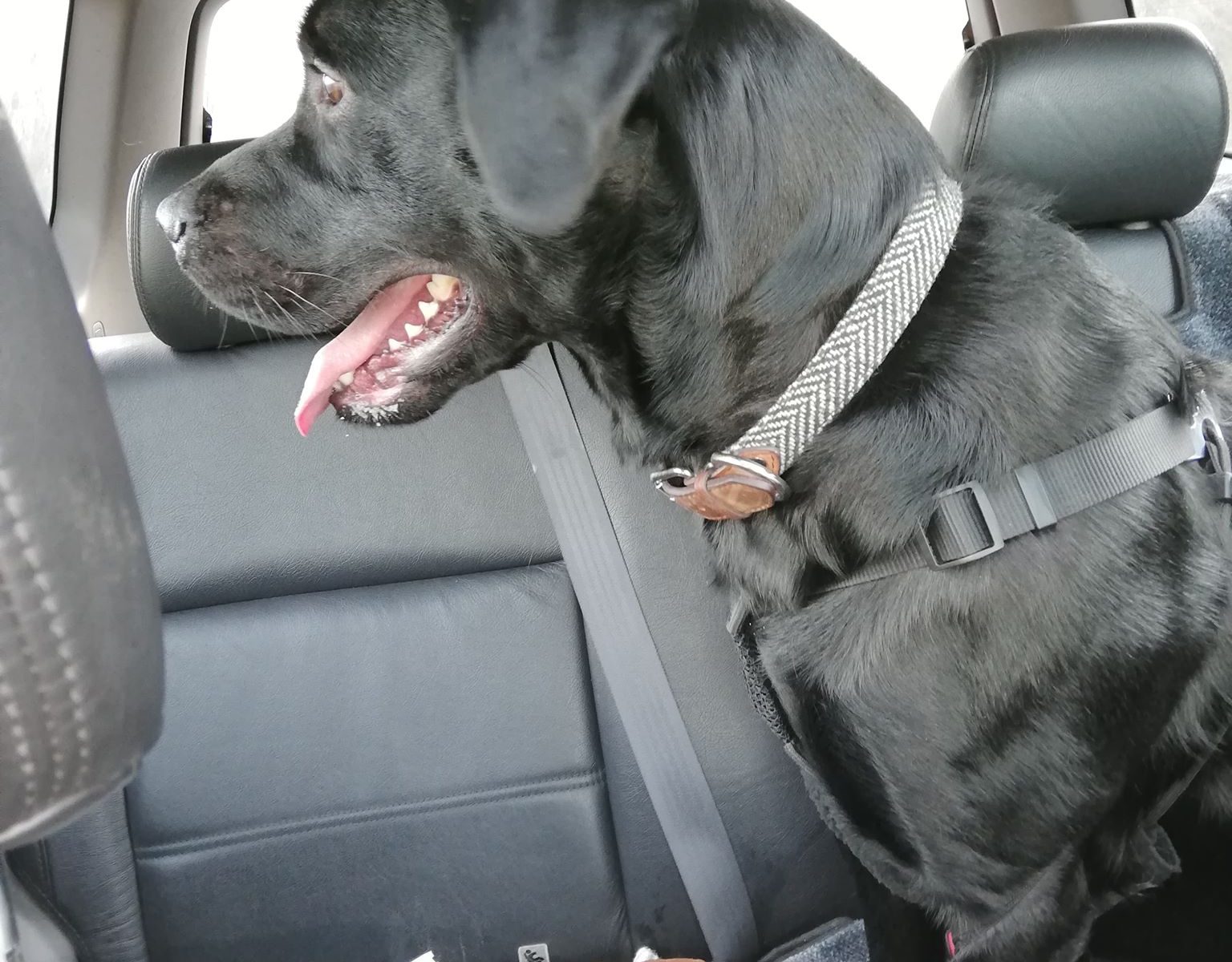
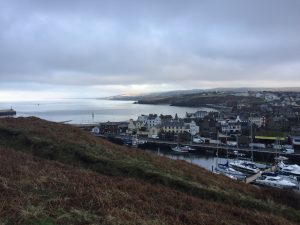 Peel #OscarWalks is the first of Oscar’s posts for 2020 and he’s very excited about it. Since the appearance of the dog trainer at the end of last year, we’ve been working very hard to get Oscar to behave better on the lead so that we can take him to more interesting places. Peel was a bit of an experiment, but on the whole it worked very well, apart from one minor incident involving Vikings which I’ll leave him to explain for himself.
Peel #OscarWalks is the first of Oscar’s posts for 2020 and he’s very excited about it. Since the appearance of the dog trainer at the end of last year, we’ve been working very hard to get Oscar to behave better on the lead so that we can take him to more interesting places. Peel was a bit of an experiment, but on the whole it worked very well, apart from one minor incident involving Vikings which I’ll leave him to explain for himself.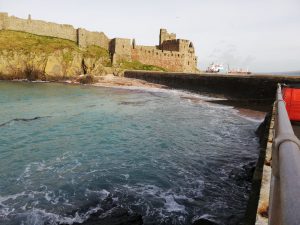 We parked the car at Fenella Beach, at the foot of Peel Hill and the castle and ten minutes was spent walking Oscar up and down the car park to get him to calm down. It didn’t help that it was fairly breezy and the tide was in, with huge waves crashing onto the little beach.
We parked the car at Fenella Beach, at the foot of Peel Hill and the castle and ten minutes was spent walking Oscar up and down the car park to get him to calm down. It didn’t help that it was fairly breezy and the tide was in, with huge waves crashing onto the little beach.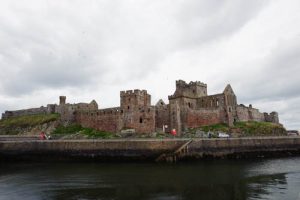 Peel was the capital of the island before 1344 and is still the island’s main fishing port, while St German’s Cathedral is the seat of the Bishop of Sodor and Man. It it still a pretty seaside resort and has a Victorian promenade and sandy beach. From Fenella Beach, we walked towards Peel Castle which overlooks the town from St Patrick’s Isle. The castle was first built in the eleventh century and is now largely ruined, but definitely worth visiting. There are walkways up around the outside of the castle with a lot of steps, a challenge with an excitable young Labrador but well worth it for the views.
Peel was the capital of the island before 1344 and is still the island’s main fishing port, while St German’s Cathedral is the seat of the Bishop of Sodor and Man. It it still a pretty seaside resort and has a Victorian promenade and sandy beach. From Fenella Beach, we walked towards Peel Castle which overlooks the town from St Patrick’s Isle. The castle was first built in the eleventh century and is now largely ruined, but definitely worth visiting. There are walkways up around the outside of the castle with a lot of steps, a challenge with an excitable young Labrador but well worth it for the views.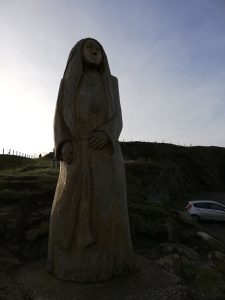 There’s a footbridge over the river, but Oscar and I walked the long way round by the road, skirting the bottom of Peel Hill. The hill was one of my favourite walks with Joey and Toby, but it’s very steep in places and when he was only a little older than Oscar is now, Toby injured himself by taking off after a rabbit and rolling a very long way down the hill, rather like the heroine of
There’s a footbridge over the river, but Oscar and I walked the long way round by the road, skirting the bottom of Peel Hill. The hill was one of my favourite walks with Joey and Toby, but it’s very steep in places and when he was only a little older than Oscar is now, Toby injured himself by taking off after a rabbit and rolling a very long way down the hill, rather like the heroine of 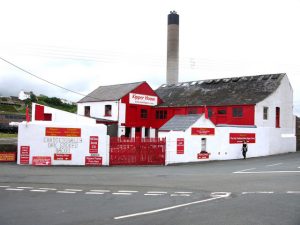
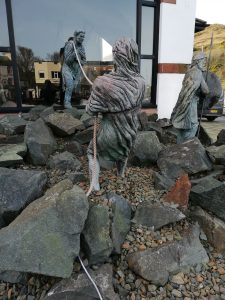 “Whaddd’you mean it’s not real? Of course it’s real, I’m looking right at it, it’s right here on the pavement. They’re terrifying! They’re huge! They’re worse than sheep! How did they get here? Why are they walking through walls? Why is nobody doing anything about them? Well I’m not having this, it’s not safe! I’m going to tell them what for! Woof! Woof woof woof! Woof, woof, woof woof, woof!”
“Whaddd’you mean it’s not real? Of course it’s real, I’m looking right at it, it’s right here on the pavement. They’re terrifying! They’re huge! They’re worse than sheep! How did they get here? Why are they walking through walls? Why is nobody doing anything about them? Well I’m not having this, it’s not safe! I’m going to tell them what for! Woof! Woof woof woof! Woof, woof, woof woof, woof!”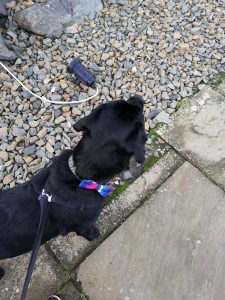 “Woof, woof, woof woof, woof! Woof, woof….OMG what this now? What’s happening to my paws? I’m being attacked from all sides, it’s sharp! Woof, woof, woof woof, woof!”
“Woof, woof, woof woof, woof! Woof, woof….OMG what this now? What’s happening to my paws? I’m being attacked from all sides, it’s sharp! Woof, woof, woof woof, woof!” “Okay. Those aren’t real Vikings, they’re statues. The boat itself is inside the museum, and they’ve carried on the Viking theme out here, which is why it looks like they’re coming through the walls. I know they made you jump but they’re no more real than the two statues of the dogs outside that house at the top of our road.”
“Okay. Those aren’t real Vikings, they’re statues. The boat itself is inside the museum, and they’ve carried on the Viking theme out here, which is why it looks like they’re coming through the walls. I know they made you jump but they’re no more real than the two statues of the dogs outside that house at the top of our road.”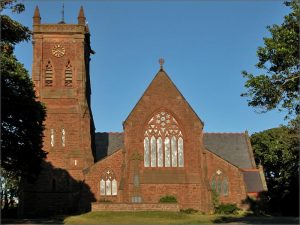
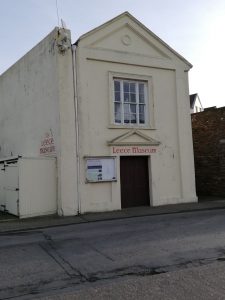 “That’s the Leece Museum. It used to be the old courthouse and gaol and it has exhibitions about the history of Peel, it’s very interesting. One day, I’m going to do a post or two about the island museums, but I’ll have to do that without you, I don’t think they’d cope with you in a museum, and frankly the idea terrifies me.”
“That’s the Leece Museum. It used to be the old courthouse and gaol and it has exhibitions about the history of Peel, it’s very interesting. One day, I’m going to do a post or two about the island museums, but I’ll have to do that without you, I don’t think they’d cope with you in a museum, and frankly the idea terrifies me.”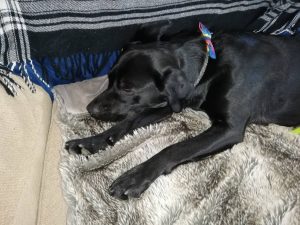
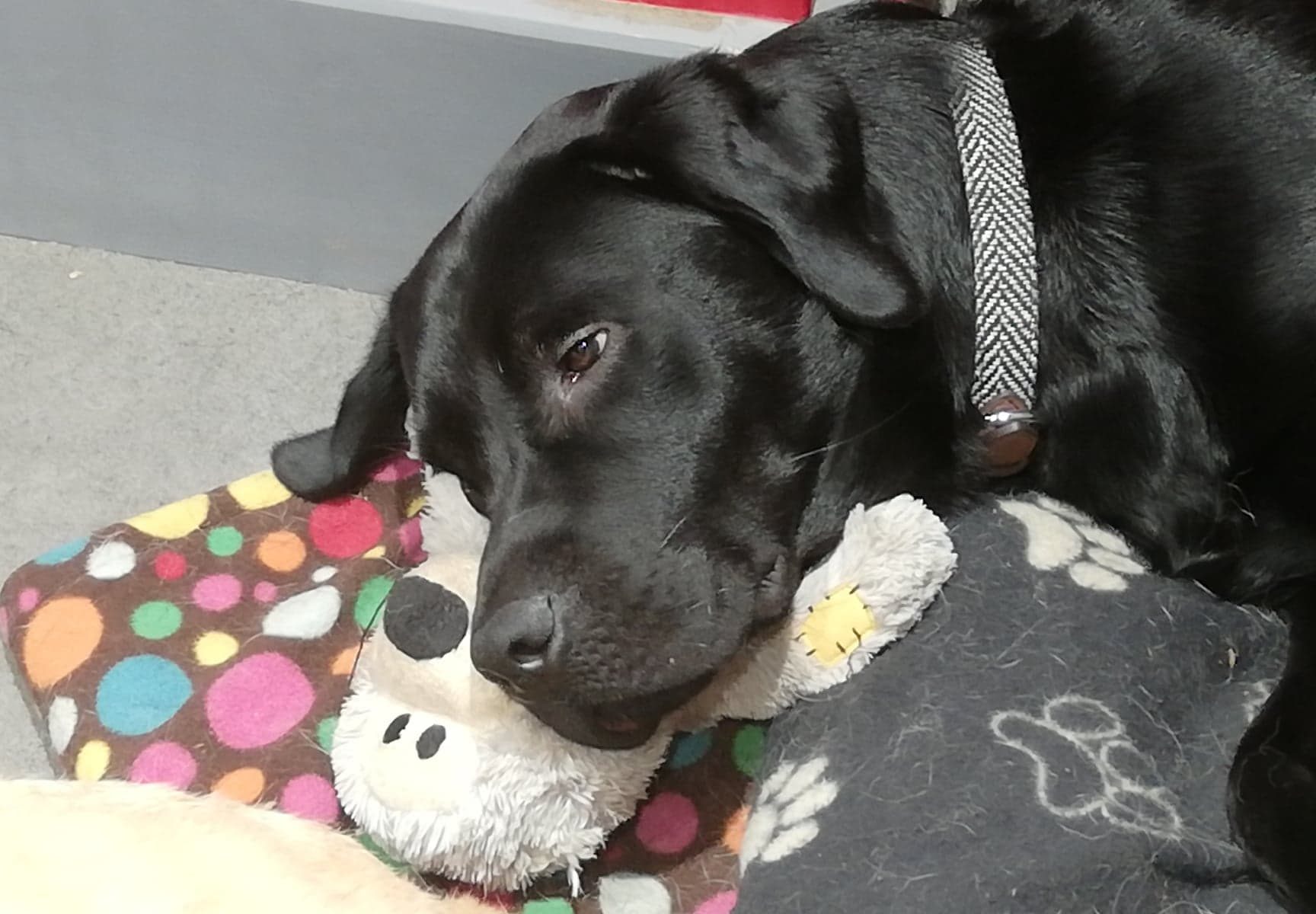
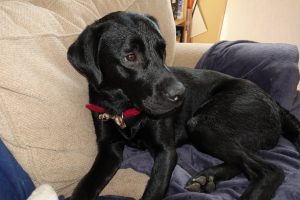
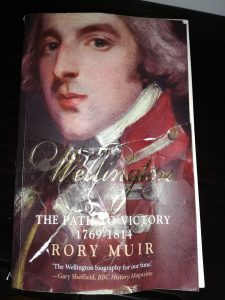
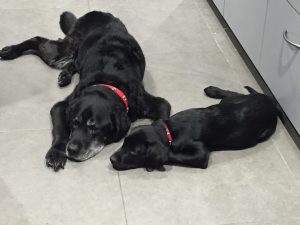
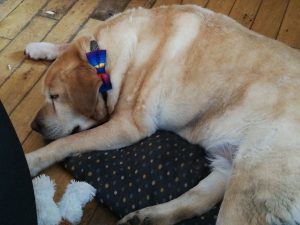
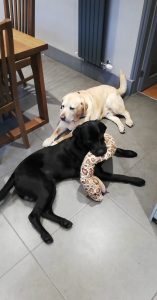
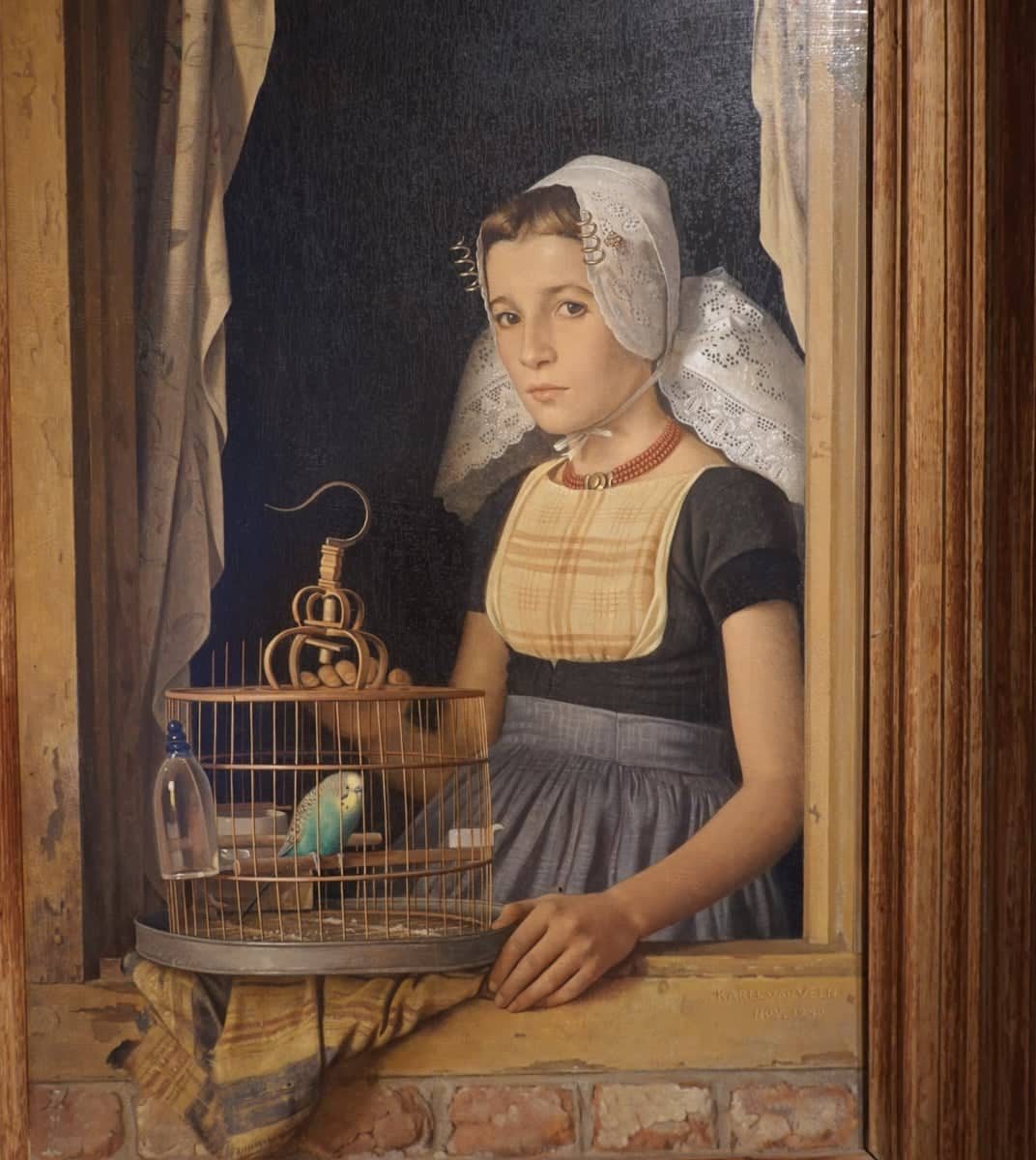
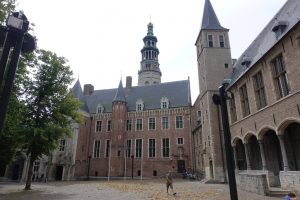 Middelburg Abbey originated in the twelfth century. Monks from Antwerp established a large religious foundation with two churches and extensive lands on Walcheren and in other parts of Zeeland. Many of the surviving buildings from the monastic period are Medieval Gothic, and date from the late sixteenth century.
Middelburg Abbey originated in the twelfth century. Monks from Antwerp established a large religious foundation with two churches and extensive lands on Walcheren and in other parts of Zeeland. Many of the surviving buildings from the monastic period are Medieval Gothic, and date from the late sixteenth century.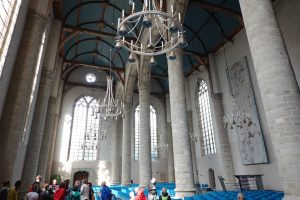 The New church features a double nave and dates from the rebuilding that followed the fire of 1558. It replaced an earlier church built around 1300 which also featured a twin nave. The eastern wall of the New church is also the western wall of the Choir church, and the two interiors were originally connected through an arch, but this was subsequently blocked up. After 1833 the New church became the only parish church for the central walled area of Middelburg.
The New church features a double nave and dates from the rebuilding that followed the fire of 1558. It replaced an earlier church built around 1300 which also featured a twin nave. The eastern wall of the New church is also the western wall of the Choir church, and the two interiors were originally connected through an arch, but this was subsequently blocked up. After 1833 the New church became the only parish church for the central walled area of Middelburg.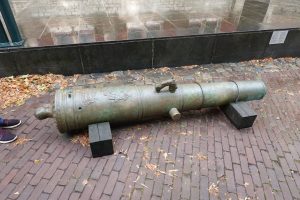 There is a big, open square in the middle of the Abbey buildings, with trees and seats and a couple of cannon which look rather as though they had been carelessly abandoned by some negligent commissary officer. There is also the entrance to the museum and cafe.
There is a big, open square in the middle of the Abbey buildings, with trees and seats and a couple of cannon which look rather as though they had been carelessly abandoned by some negligent commissary officer. There is also the entrance to the museum and cafe.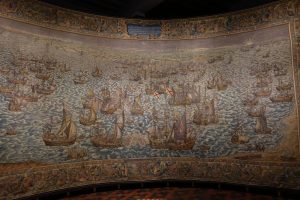 This part of the building has been thoroughly modernised inside, giving little sense of the original abbey. The museum has exhibitions over a number of floors. It is very well designed and put together with very modern themes, but I will be honest and admit that I was a little disappointed. While I wasn’t expecting to find anything about the campaign of 1809 which was not especially significant in Dutch history, apart from the people who died in Vlissingen and Veere, I was very much hoping for some information about the history of Middelburg and Walcheren and that was very much lacking. The one exhibition which dealt with history, was an amazing selection of tapestries telling the story of the rebellion against Spain. I loved that section. Much of the rest of the museum was beautifully put together but gave very little actual information about the town or its history. Given that there is no other museum in Middelburg to do that job, I thought it a shame, although I did pick up some useful information about historic costume.
This part of the building has been thoroughly modernised inside, giving little sense of the original abbey. The museum has exhibitions over a number of floors. It is very well designed and put together with very modern themes, but I will be honest and admit that I was a little disappointed. While I wasn’t expecting to find anything about the campaign of 1809 which was not especially significant in Dutch history, apart from the people who died in Vlissingen and Veere, I was very much hoping for some information about the history of Middelburg and Walcheren and that was very much lacking. The one exhibition which dealt with history, was an amazing selection of tapestries telling the story of the rebellion against Spain. I loved that section. Much of the rest of the museum was beautifully put together but gave very little actual information about the town or its history. Given that there is no other museum in Middelburg to do that job, I thought it a shame, although I did pick up some useful information about historic costume.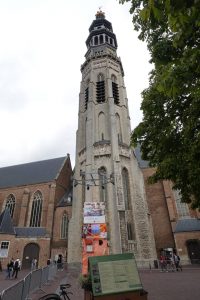 We climbed Lange Jan to see the fabulous views over the town, following in the footsteps of my fictional Lieutenant Durrell who found it a quiet haven away from the chaos of the campaign in 1809. After coffee and cake outside a local cafe, dodging another rain shower, we went back to Veere to the two museums there. The Veere Museums consist of the City Hall and the Scottish Houses on the quay, both fabulous historic buildings.
We climbed Lange Jan to see the fabulous views over the town, following in the footsteps of my fictional Lieutenant Durrell who found it a quiet haven away from the chaos of the campaign in 1809. After coffee and cake outside a local cafe, dodging another rain shower, we went back to Veere to the two museums there. The Veere Museums consist of the City Hall and the Scottish Houses on the quay, both fabulous historic buildings.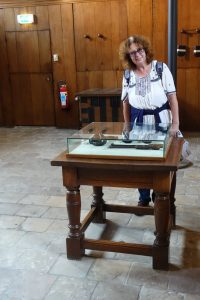 The museums in Veere were far more interesting in terms of history, although I have to say that there was still more art than history in both of them. I really enjoy art, and I loved the story of the English family who set up an artists’ community in Veere before the second world war. I still felt a slight sense of frustration, however. These towns have so much history and I came away knowing very little about the people, the development of the town, their economy and agriculture and what shaped them. Perhaps there’s a museum somewhere else in this area that I’ve not found which offers that.
The museums in Veere were far more interesting in terms of history, although I have to say that there was still more art than history in both of them. I really enjoy art, and I loved the story of the English family who set up an artists’ community in Veere before the second world war. I still felt a slight sense of frustration, however. These towns have so much history and I came away knowing very little about the people, the development of the town, their economy and agriculture and what shaped them. Perhaps there’s a museum somewhere else in this area that I’ve not found which offers that.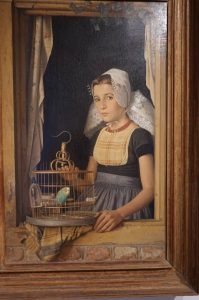 Having said that, I had a fabulous day. The museums were great at what they did, even if it wasn’t what I wanted, and I thoroughly enjoyed myself. I also found, in a rather more modern painting of a woman in traditional Dutch costume, my perfect Katja de Groot. Honestly, I couldn’t stop staring at her. Isn’t she beautiful?
Having said that, I had a fabulous day. The museums were great at what they did, even if it wasn’t what I wanted, and I thoroughly enjoyed myself. I also found, in a rather more modern painting of a woman in traditional Dutch costume, my perfect Katja de Groot. Honestly, I couldn’t stop staring at her. Isn’t she beautiful?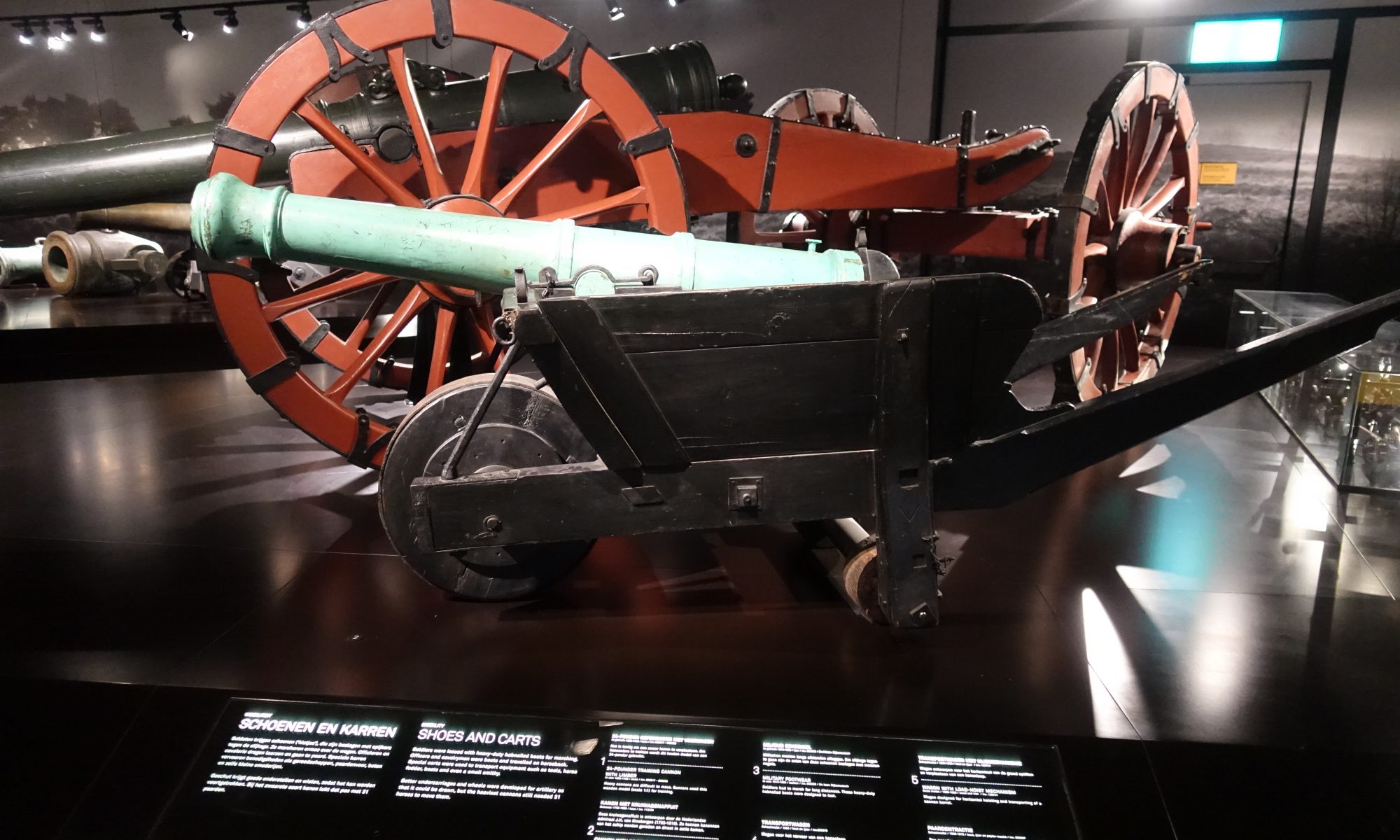
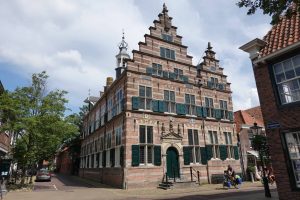 Our Walcheren Expedition: Preview took us to Naarden. We travelled to Walcheren via Amsterdam, which gave us the opportunity to spend a couple of days visiting some friends who live in Naarden. I’d not been there before, and given that most of this trip is about Me Me Me, I had already decided to let everybody else plan these few days. It says a lot about my friends that day one was spent exploring the seventeenth century star fortress and day two was spent at the
Our Walcheren Expedition: Preview took us to Naarden. We travelled to Walcheren via Amsterdam, which gave us the opportunity to spend a couple of days visiting some friends who live in Naarden. I’d not been there before, and given that most of this trip is about Me Me Me, I had already decided to let everybody else plan these few days. It says a lot about my friends that day one was spent exploring the seventeenth century star fortress and day two was spent at the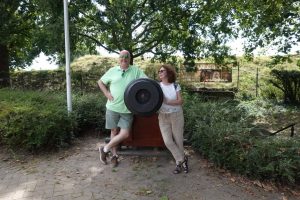 The town of
The town of 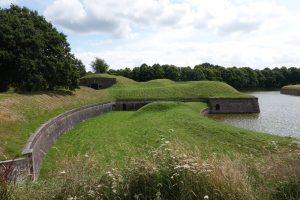 The current star shape of Naarden dates back to the 17th Century, when the fortifications were improved after the siege of 1673. Naarden was part of the New Dutch Waterline, a defensive line through the Netherlands which I’d never heard of before. I would love to do a tour of these forts, they look stunning, but that will have to be another visit.
The current star shape of Naarden dates back to the 17th Century, when the fortifications were improved after the siege of 1673. Naarden was part of the New Dutch Waterline, a defensive line through the Netherlands which I’d never heard of before. I would love to do a tour of these forts, they look stunning, but that will have to be another visit.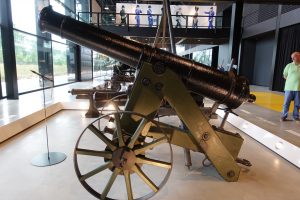 The National Military Museum is definitely a full day out. It is situated on the former air base at Soesterberg and apparently combines the collections of the former Military Aviation Museum in Soesterberg and Army Museum in Delft.
The National Military Museum is definitely a full day out. It is situated on the former air base at Soesterberg and apparently combines the collections of the former Military Aviation Museum in Soesterberg and Army Museum in Delft.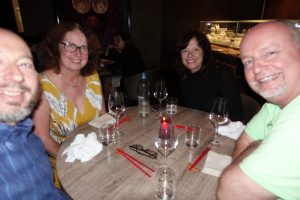 It wouldn’t feel right to end this first section of our trip without mentioning our evening out at the
It wouldn’t feel right to end this first section of our trip without mentioning our evening out at the 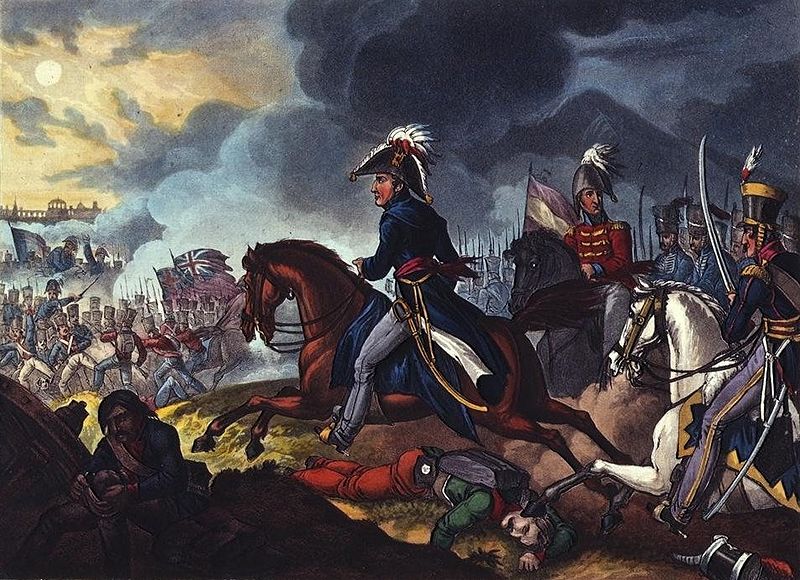
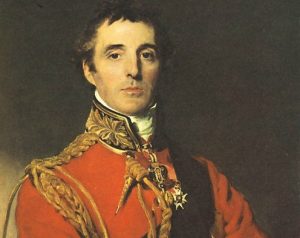 The Battle of Salamanca was fought on this day in 1812 across the rolling plains around the small Spanish village of Los Arapiles. In this excerpt from
The Battle of Salamanca was fought on this day in 1812 across the rolling plains around the small Spanish village of Los Arapiles. In this excerpt from  After a little more than a fortnight at Rueda, it was a relief to Paul to get his brigade moving. Night marches could be difficult, depending on the terrain, but most of his men were very experienced and followed each other through the darkness, relying on the voices of NCOs and officers to guide them. The clink of horses and the thudding of hooves followed the progress of the cavalry who were advancing with the light division. Paul rode up the long column to find General Charles Alten in conversation with his big German orderly. Peering through the darkness he recognised Paul and waved him forward.
After a little more than a fortnight at Rueda, it was a relief to Paul to get his brigade moving. Night marches could be difficult, depending on the terrain, but most of his men were very experienced and followed each other through the darkness, relying on the voices of NCOs and officers to guide them. The clink of horses and the thudding of hooves followed the progress of the cavalry who were advancing with the light division. Paul rode up the long column to find General Charles Alten in conversation with his big German orderly. Peering through the darkness he recognised Paul and waved him forward. We visited the battlefield during our tour of Portugal and Spain in 2017. The Salamanca battlefield site is immense; not in actual size since it probably isn’t the widest battlefield Wellington fought over, but in the sheer amount of information available. I was
We visited the battlefield during our tour of Portugal and Spain in 2017. The Salamanca battlefield site is immense; not in actual size since it probably isn’t the widest battlefield Wellington fought over, but in the sheer amount of information available. I was 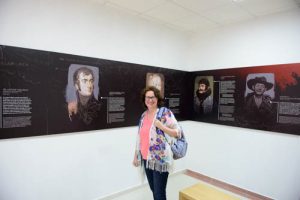 I was so glad we did. This is definitely the best small museum we visited. For one thing, everything is in both Spanish and English which wasmuch more useful than our desperate attempts to translate interpretation boards in other places. For another, it is amazingly detailed and accurate. From the advantages and disadvantages of the different infantry formations of line, square and column, to the best way to load a musket, somebody here had done their research and very well.
I was so glad we did. This is definitely the best small museum we visited. For one thing, everything is in both Spanish and English which wasmuch more useful than our desperate attempts to translate interpretation boards in other places. For another, it is amazingly detailed and accurate. From the advantages and disadvantages of the different infantry formations of line, square and column, to the best way to load a musket, somebody here had done their research and very well. 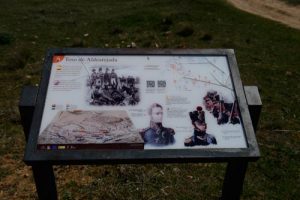 With the help of the museum, the interpretation boards, which are excellent, my trusty battlefield guide and a map, the Battle of Salamanca became suddenly very clear to me. Driving from board to board and then climbing hills and rocky outcrops to view the various vantage points of the battle it was very easy to visualise how Wellington was able to split the French line and send their army fleeing within a few hours.
With the help of the museum, the interpretation boards, which are excellent, my trusty battlefield guide and a map, the Battle of Salamanca became suddenly very clear to me. Driving from board to board and then climbing hills and rocky outcrops to view the various vantage points of the battle it was very easy to visualise how Wellington was able to split the French line and send their army fleeing within a few hours.
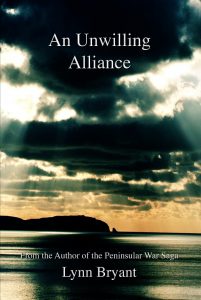
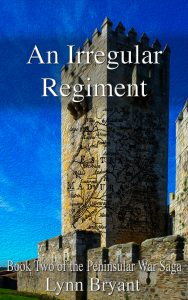
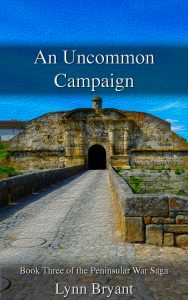
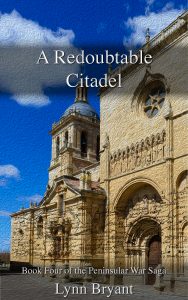
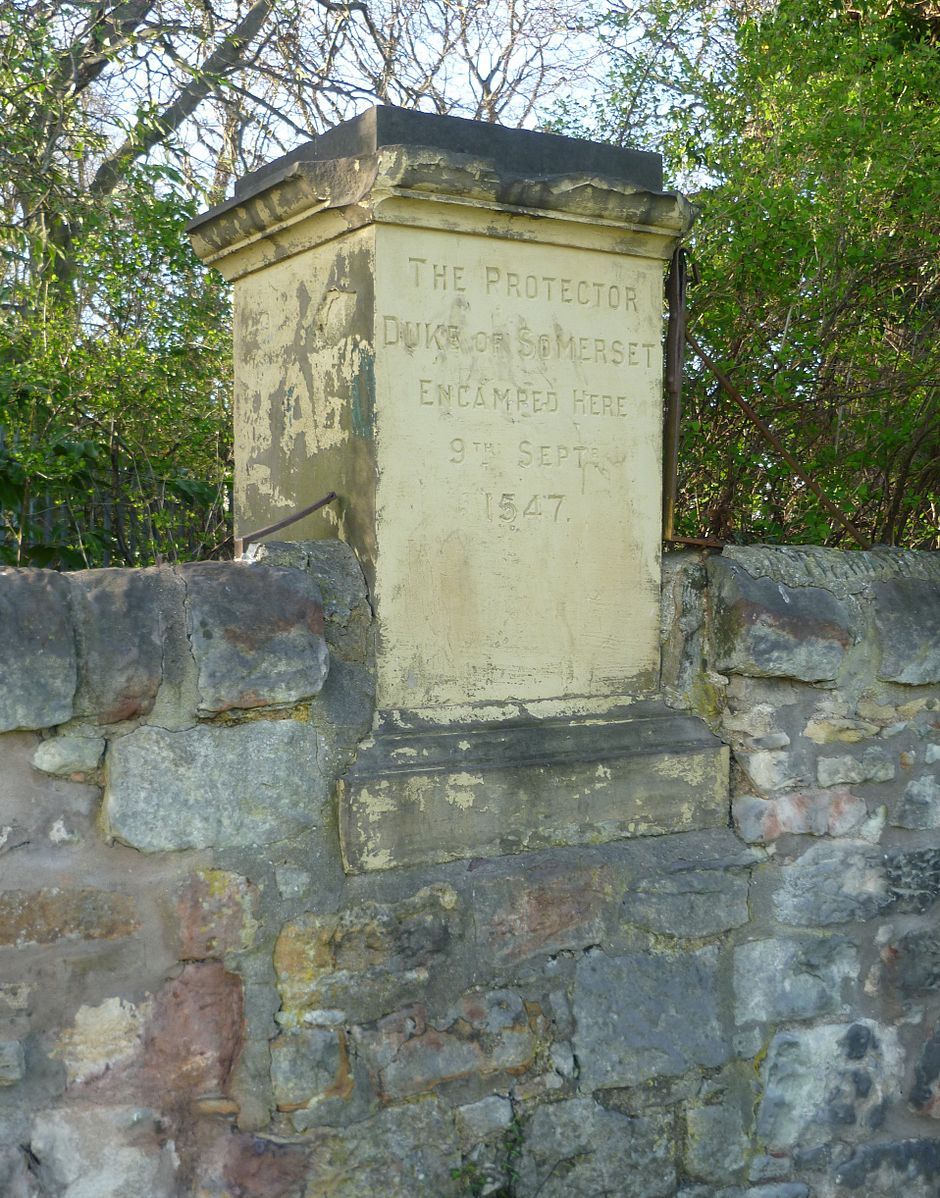
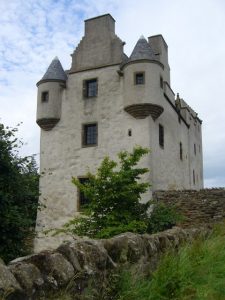
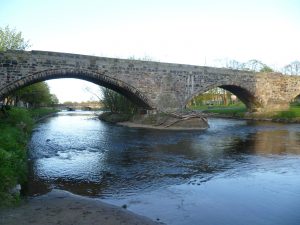
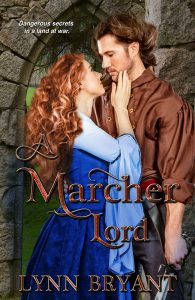
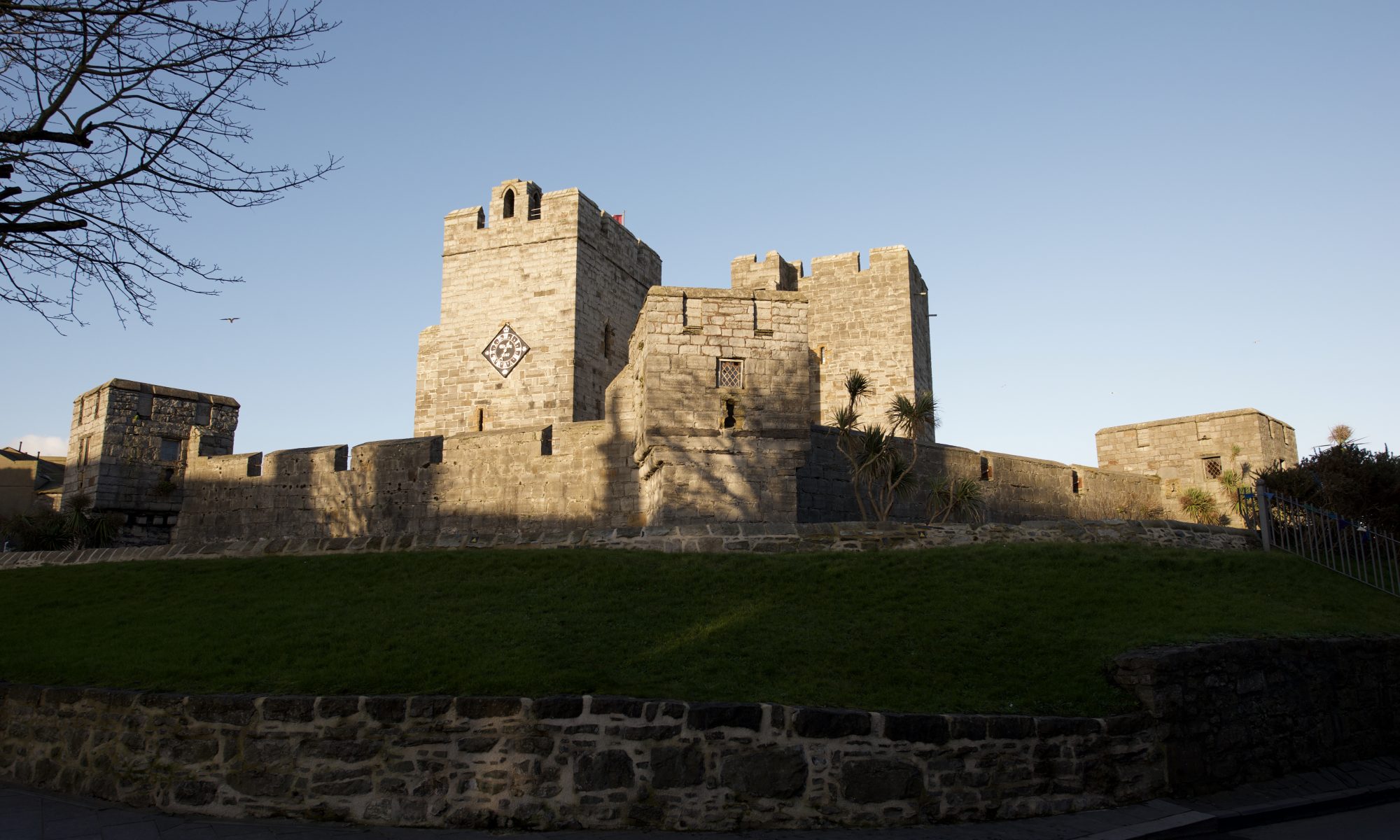
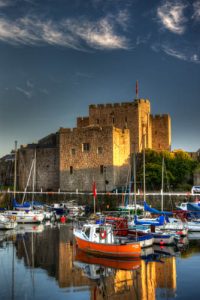
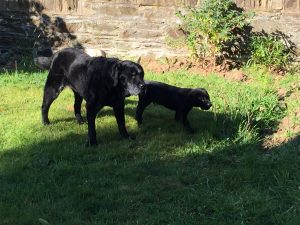 were genuinely funny; I particularly liked the one he apparently found in an old book telling of the ghost of a black headless dog in Castletown which can only be seen by another dog. A talking dog, presumably. I must take my boys down there and they can tell me if they see anything…
were genuinely funny; I particularly liked the one he apparently found in an old book telling of the ghost of a black headless dog in Castletown which can only be seen by another dog. A talking dog, presumably. I must take my boys down there and they can tell me if they see anything…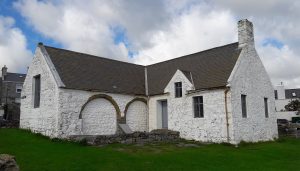 Other stories genuinely had a spooky feel about them. The ghostly woman in black seen around Castle Rushen is a very traditional ghost story but there’s a reason it’s a classic and the mysterious light coming on at night in one of the rooms of Compton House was also an odd one. I also enjoyed the haunting of the Old Grammar School; ghostly children’s voices singing in an empty building is a definite chiller.
Other stories genuinely had a spooky feel about them. The ghostly woman in black seen around Castle Rushen is a very traditional ghost story but there’s a reason it’s a classic and the mysterious light coming on at night in one of the rooms of Compton House was also an odd one. I also enjoyed the haunting of the Old Grammar School; ghostly children’s voices singing in an empty building is a definite chiller.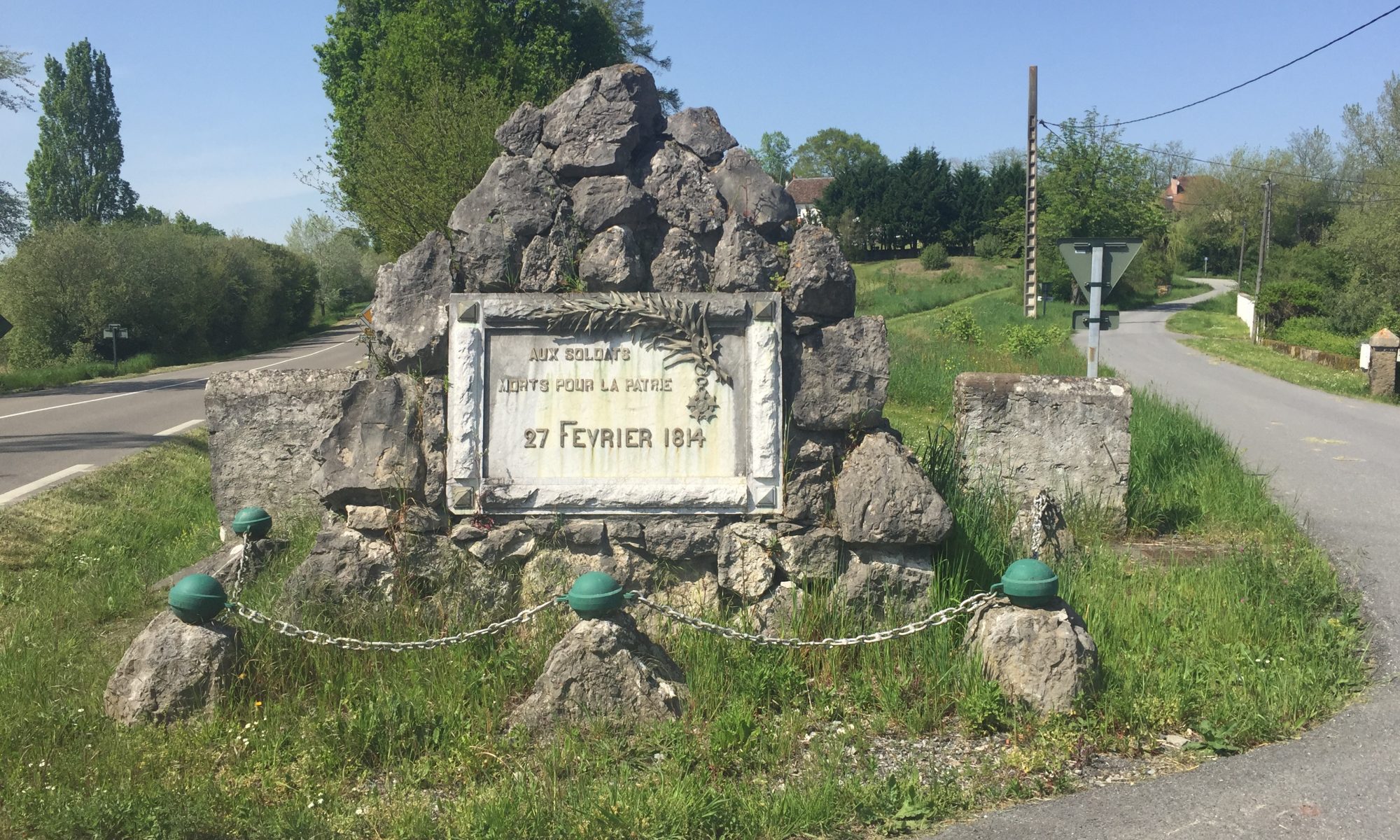
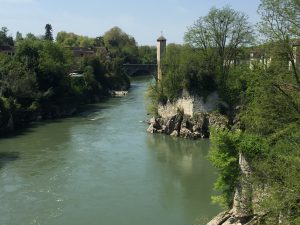 The Battle of Orthez took place on 27 February 1814. After the fierce fighting through the Pyrenees, storms and torrential rain prevented any action for two months.
The Battle of Orthez took place on 27 February 1814. After the fierce fighting through the Pyrenees, storms and torrential rain prevented any action for two months.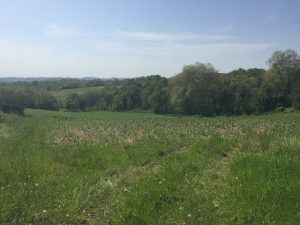 It was frosty but not frozen on the morning of 27 February, difficult for me to imagine yesterday, exploring the battlefield in soaring temperatures. At 8.30 the 4th division attacked Taupin at St Boes and quickly seized the church. Ross’s brigade swept into the village but were driven back by the battery on the Plassotte knoll. Cole brought up a KGL battery to duel with Taupin’s guns. This immediately became the target of the French batteries on the Plassotte and Luc knolls; two guns were hit and Captain Sympher was killed.
It was frosty but not frozen on the morning of 27 February, difficult for me to imagine yesterday, exploring the battlefield in soaring temperatures. At 8.30 the 4th division attacked Taupin at St Boes and quickly seized the church. Ross’s brigade swept into the village but were driven back by the battery on the Plassotte knoll. Cole brought up a KGL battery to duel with Taupin’s guns. This immediately became the target of the French batteries on the Plassotte and Luc knolls; two guns were hit and Captain Sympher was killed.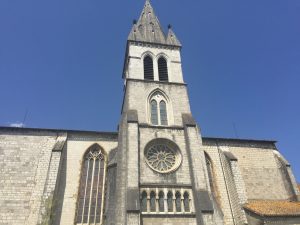 Orthez is just over thirty miles to the east of Bayonne, a pretty little town on the river Gave de Pau. The original bridge, with its distinctive sentry tower in the centre, is still there and can be seen from the modern bridge. We drove through the town to view Wellington’s deployment area up past the church and then drove up towards Baights de Bearn to see the spurs where Picton’s men would have been deployed to the right of the road.
Orthez is just over thirty miles to the east of Bayonne, a pretty little town on the river Gave de Pau. The original bridge, with its distinctive sentry tower in the centre, is still there and can be seen from the modern bridge. We drove through the town to view Wellington’s deployment area up past the church and then drove up towards Baights de Bearn to see the spurs where Picton’s men would have been deployed to the right of the road.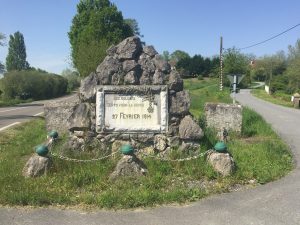 Turning right after St Boes we drove along the ridge held by Soult’s men. The 52nd would have climbed up the gulley to the right to appear between Taupin and Rouget’s division. It doesn’t look like a particularly easy climb and given the time of year it may well have been very boggy. There is a memorial to General Foy’s men on the left-hand side further along the road.
Turning right after St Boes we drove along the ridge held by Soult’s men. The 52nd would have climbed up the gulley to the right to appear between Taupin and Rouget’s division. It doesn’t look like a particularly easy climb and given the time of year it may well have been very boggy. There is a memorial to General Foy’s men on the left-hand side further along the road.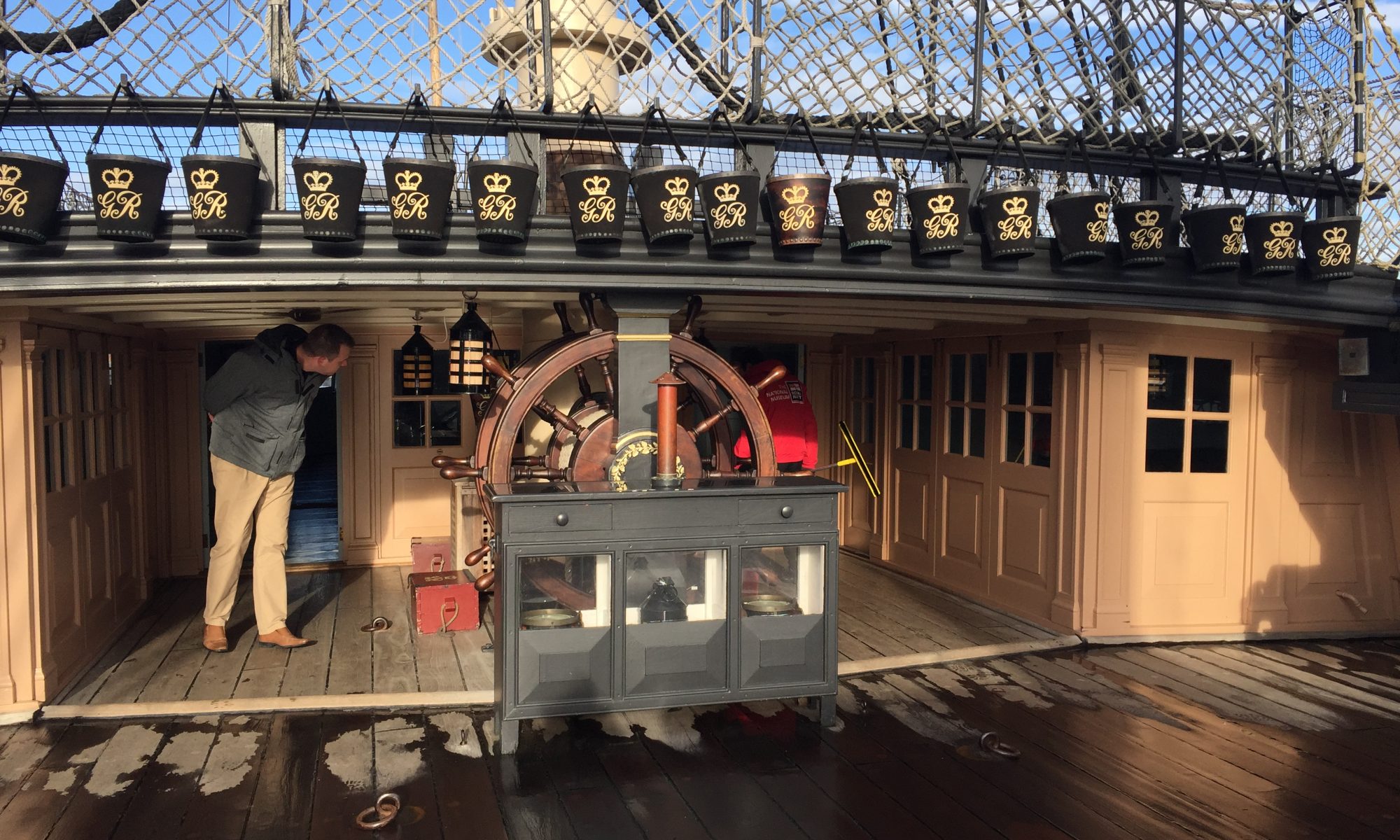
 The
The 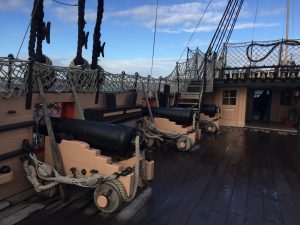 HMS Victory
HMS Victory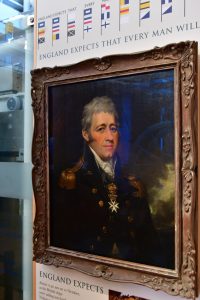 National Museum of the Royal Navy
National Museum of the Royal Navy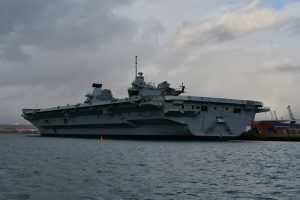 Harbour Tour
Harbour Tour